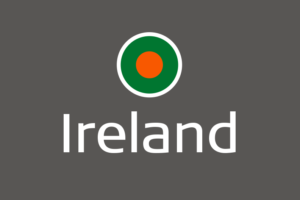Ireland: Retirement: Compliance: Ireland’s Retirement Benefit Landscape is Changing Fast
 Many thanks to Asinta’s Irish Partner, Glennon Employee Benefits, for contributing this article.
Many thanks to Asinta’s Irish Partner, Glennon Employee Benefits, for contributing this article.
Recently the Irish government released details of how a proposed auto-enrollment pension scheme might work. Nothing is set in stone yet, and the details released to date are planned to form the basis of further discussion. However, as Ireland is one of only two Organizations for Economic Cooperation and Development (OECD) countries without a mandatory earnings-related component to retirement saving, auto-enrollment is seen by many as a vital step in moving towards better pension coverage.
Currently 65% of private sector workers in Ireland have no supplemental pension coverage to top up the State Pension, which is currently set at a flat rate of €12,652 payable from age 68. The auto-enrollment policy introduced in the UK has been generally viewed as a success with close to 10 million people now included in these new plans since they were introduced in 2012.
Who will be included under the Auto-Enrollment Scheme?
The plan is to automatically enroll all private sector employees in the scheme who are:
- Over age 23 and under 60 with gross earnings of over €20,000; and
- Who are not at that time in a private pension arrangement, or are, but the pension arrangement doesn’t meet a ‘prescribed minimum standard’ which yet to be specified.
There will be no waiting period before enrollment. The €20,000 earnings limit for joining will be fixed for the first five years and adjusted thereafter.
Others, such as private sector employees outside the limits listed above, and the self-employed, can also opt to enroll, but they don’t have to.
How will the scheme work?
The main proposals are:
- The employer will enroll qualified employees in the auto-enrollment scheme through a portal called the Central Processing Authority (CPA), a State run body.
- The employee will be able to pick from one of four ‘Registered Providers’ appointed by the CPA.
- Providers are likely to operate their scheme on a Master Trust basis.
- Each Provider will need to offer three standard funds, a low, medium and high-risk fund, probably run along a ‘Lifestyle’ approach. The maximum fund charge will be 0.5% per annum. If the employee doesn’t choose a fund the Provider will specify a default fund.
- The employee contracts with the Provider and their account will be run on a defined contribution basis.
- The required contribution payable by the employee when the scheme starts will be 1% of gross earnings taken from their net income, up to an earnings limit of €75,000.
- The 1% will be increased by 1% in each of the first six years to reach 6% by 2028.
- The employer will pay a matching contribution each year. These contributions will be tax deductible for the employer.
- The government will pay a contribution to the member’s account of 1/3rd of the member’s contribution, instead of providing tax relief on the employee’s contribution. This amounts in effect to a fixed 25% tax relief (currently the tax relief for lower incomes is 20%, but is 40% for those on incomes >€35,000).
- The employee must remain a member of the scheme for at least six months, but can then opt out during a two-year window. If they do opt out, they are automatically re-enrolled after a further three years.
- Where an employee opts out of the scheme, they will receive a refund of their own contributions only. The employer and government contributions will be retained within the scheme to cover its ongoing expenses.
- The normal retirement age of the scheme will be set at the employee’s State Pension Age, currently age 68 for most, but this is likely to be extended in line with life expectancy in Ireland. There will be no early access to benefits other than on ill-health grounds.
- The auto-enrollment scheme is planned to roll out on a phased basis at the end of 2022.
While the proposed scheme is to be largely welcomed, there are considerable difference between the proposed and current supplemental pension system in terms of the reduced level for tax relief for many, and the age from which benefits can be taken. Nevertheless, employers will need to factor in the additional payroll expenses as the scheme ramps up over the initial six-year period and thereafter. More details on the auto-enrollment scheme are likely to emerge in 2019 after the end of the consultation period.
